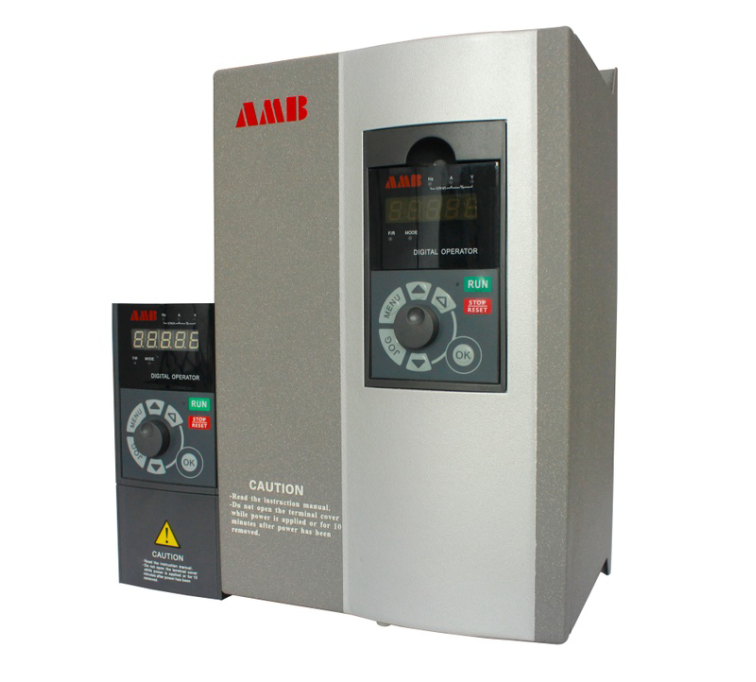
As a precision electronic industrial control device, in order to make the inverter run smoothly and smoothly for a long time, as a professional technician, we also need to have four environmental factors directly affecting the operation of the inverter before the inverter is installed or running. Get started and do a good job of preparation.
First, the physical environment
① Temperature factor
Temperature has a huge impact on the life and reliability of the electronic components inside the inverter. When using the inverter in a high operating temperature environment, additional cooling and cooling measures must be taken to ensure that the ambient temperature is stable within the range required by the inverter manual (-10 to + 40/45 ° C). In the electric control box, the inverter should generally be installed on the upper part of the box, and it is strictly forbidden to install the heating element close to the bottom of the inverter! In addition, the inverter's own cooling fan should be inspected and cleaned regularly during use.
②Humidity factor
For the harm of such factors, I believe that the majority of colleagues can understand that-when the ambient humidity is greater than 90%, the insulation of the components inside the inverter will deteriorate, which will cause the inverter to malfunction. Therefore, it is necessary to put desiccant in the inverter when necessary.
③ Corrosive gas
Because corrosive gas has a great destructive effect on the electrical insulation performance of the PCB board inside the inverter, plastic product casing, etc., when using the inverter in such an environment, a sealed enclosure that meets the requirements of safety regulations should be used.
④ Vibration and shock
These two kinds of physical phenomena that can cause poor electrical contact of the inverter and the welding of the components also have a greater impact on the normal use of the inverter. Therefore, it is not important to strengthen the daily maintenance and repair work.
Electrical environment
①Prevent electromagnetic interference
Because the inverter has rectification and inverter links in the work, this work process will inevitably generate a lot of electromagnetic wave interference. These high-frequency electromagnetic waves will have some interference with nearby instruments. For this reason, the instrumentation of the inverter and the same network should be grounded first, and the cables between various electrical components and instruments should be shielded cable, and the shielded layer must be grounded.
② Prevent overvoltage at the input
Although most inverter power supply input terminals have over-voltage protection function, if the high-voltage input terminal of the inverter is applied for a long time, it will often cause damage to related components (such as varistor and rectifier) inside the inverter. For power sources with frequent and large fluctuations in power supply voltage, voltage regulators should be considered.
Third, grounding
Proper grounding of the inverter is an important means to improve system sensitivity and suppress noise interference. The grounding terminal G (also marked with E) of the inverter should be as small as possible. The cross-sectional area of the grounding wire should not be less than 2mm2, and the length should be controlled within 20m. In addition, it should be pointed out that the shield of the signal input line of the inverter should be connected to the G (or E) terminal, and the other end must not be connected to the ground, otherwise it will cause fluctuations in signal changes and system oscillation.
Fourth, lightning protection
Lightning absorption and discharge circuits are generally provided in the inverter to prevent damage to the inverter caused by instant lightning intrusion. However, in the actual operation process, especially when the power line of the inverter is introduced overhead, it is not enough to rely solely on the lightning protection circuit inside the inverter. For this reason, in the lightning active area, and the power supply of the inverter is an overhead line, you should install a lightning arrester (manufacturer's option) for the inverter at the incoming line, or embed zinc plating at a distance of 20m from the inverter according to the requirements Lightning protection for grounded steel pipes.

|
|

|
| The public, | Mobile station |
 0755-81719517
0755-81719517
|
|
 0755-81719530 0755-81719530 |
 [email protected] [email protected] |
 Floor 1, 5 and 6, building 7, lijincheng science and technology industrial park, gongye dong road, longhua new district, shenzhen Floor 1, 5 and 6, building 7, lijincheng science and technology industrial park, gongye dong road, longhua new district, shenzhen |
|